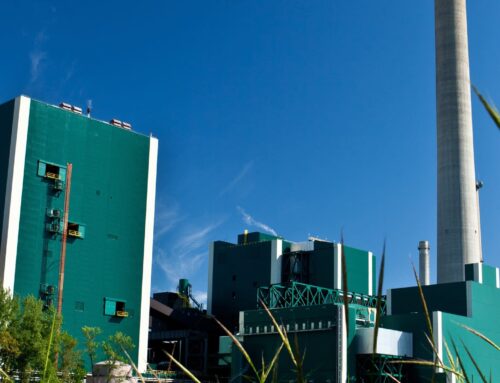India’s Green Transition Gains Momentum with $386 Billion in Funding Pledges
September 22, 2024
- India is attracting significant investment in its renewable energy sector, with financial institutions pledging $386 billion and private companies like Tata Power making substantial commitments.
- The Indian government has set ambitious targets for renewable energy capacity, aiming for 500 GW by 2030 and net-zero emissions by 2070.
- India’s renewable energy expansion is driven by a combination of government policies, investor confidence, and growing energy demand.

India has been asking investors to support its green transition for several years, and its renewable energy industry appears to finally be picking up momentum. The South Asian country continues to rely heavily on fossil fuels, with no possibility of a rapid shift away from oil, gas and coal to renewable alternatives. However, the government aims to achieve net-zero carbon emissions by 2070, which means it will have to accelerate the growth of its green energy capacity in line with its rapid population growth.
India’s government produced the “Roadmap to India’s 2030 Decarbonisation Target” ahead of the COP26 climate summit, announcing the aim of reducing carbon emissions by 50 percent and achieving 500 GW of fossil fuel-free generating capacity by 2030. These aims are more ambitious than its commitments under the 2015 Paris Agreement, demonstrating the government’s ambitions for an eventual green transition.
Prime Minister Narendra Modi has repeatedly called on the international community to support India’s green transition aims by funding the development of a strong renewable energy and clean tech sector. In 2023, at the G20 Leaders’ Summit, Modi emphasised the large investment that is required to support an inclusive energy transition to combat climate change. Modi stated, “Keeping in mind the challenge of climate change, energy transition is a significant need of the 21st century world. Trillions of dollars are required for an inclusive energy transition. Naturally, developed countries play a very crucial role in this.”
Speaking at the Global RE-Invest summit this September, Modi doubled down on his efforts to attract investment. Modi stated, “India is a guarantee for better returns if you’re looking to expand. There is no better place for investments and innovation (in renewable energy) …I invite you all to invest in India’s green transition.” He based this assertion on the fact that “India is the only country among G20 nations to have fulfilled all the climate commitments made in Paris nine years before the deadline. A developing nation has achieved what developed nations could not.” Although, in reality, India is still 13 percent short of Modi’s pledge at the UN climate talks in Paris in 2015 to increase its renewable energy capacity to 175 GW by 2022.
Nevertheless, following years of persistence, India is finally attracting the funding it needs to accelerate the development of its renewable energy capacity. India is expected to connect a record 35 GW of solar and wind power to its grid by the end of March 2025. The South Asian country is the world’s third-largest solar power producer. However, the commissioning of large solar farms has slowed in recent years, with more solar capacity needed to meet the growing energy demand in place of dirtier alternatives, such as coal.
To help India achieve its 2030 climate goals, financial institutions have pledged $386 billion in financing for renewable energy projects by 2030. India will have to install a minimum of 44 GW of clean energy capacity a year between now and the end of the decade to meet its renewable energy goals. India’s Renewables Energy Minister Pralhad Joshi stated, “We received overwhelming commitments from states and Union Territories as well as from the developers, manufacturers, and financial institutes to support our goal of 500 GW by 2030.”
In addition to financial institutions, several private companies are increasing their investment in India’s green energy and clean tech sector. This September, India’s Tata Power announced it would be investing almost $9 billion in expanding the country’s renewable energy capacity. The Indian electric utility said it would invest the money over the next five to six years to add 15 GW of renewable energy by the end of the decade in support of a green transition. Praveer Sinha, the CEO of Tata Power, stated “We see renewable energy as the future, and this investment will significantly bolster our capacity in that direction.”
Last year, the Avaada Group secured $1.3 billion in funding to advance its green hydrogen, green methanol, green ammonia, solar manufacturing and renewable power operations in India. Meanwhile, the Indian infrastructure lender REC recently announced it had signed deals worth around $13.37 billion with renewable energy developers. The funding will go towards the development of several industries including solar, wind, hydroelectric, battery energy and green ammonia.
While this is a positive start, India’s government is promoting more investment opportunities in support of the country’s green transition. In June, at the Indo-Pacific Economic Framework for Prosperity (IPEF) Clean Economy Investor Forum, India’s Commerce Secretary Sunil Barthwal announced investment opportunities of $500 billion in New Delhi, particularly in renewables, green hydrogen and EVs. This reflects a government-wide aim of raising funds to ensure that India can gradually shift its reliance away from coal to green alternatives as its energy demand continues to grow. With the COP29 climate summit coming up in a few weeks, we can expect to hear more about India’s progress and see a greater commitment from high-income countries to expanding the renewable energy capacity of the developing world, including India.
By Felicity Bradstock for Oilprice.com
More Top Reads From Oilprice.com
<!–
Trending Discussions
–>

Felicity Bradstock
Felicity Bradstock is a freelance writer specialising in Energy and Finance. She has a Master’s in International Development from the University of Birmingham, UK.
Search
RECENT PRESS RELEASES
Related Post






